Archive for April, 2013
April 29th, 2013 by dave dorsey
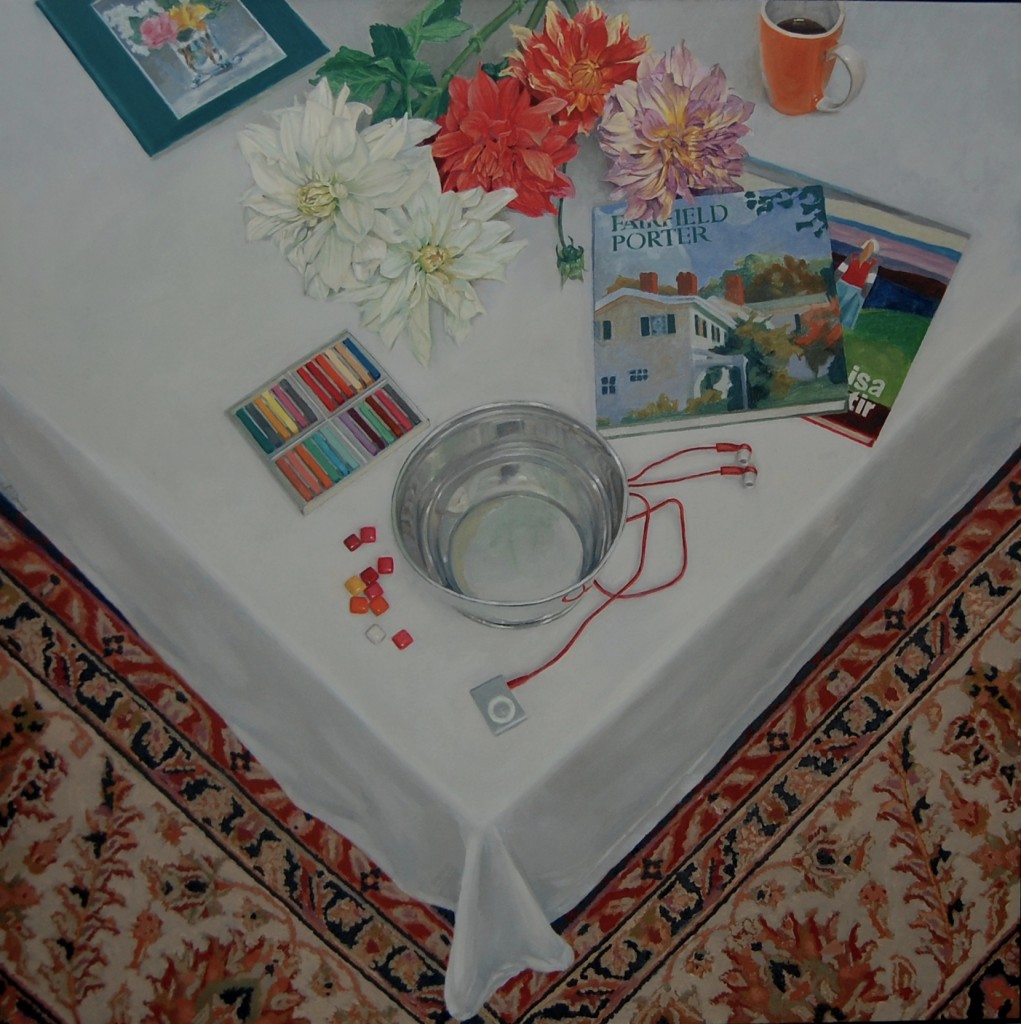
“Flowers from Another Year” has been accepted for Butler Institute of American Art’s 77th Midyear Exhibition, from Sunday June 30 through Sunday, August 18. This will be the first time I’ve shown work in the annual show.
April 29th, 2013 by dave dorsey

Andy Warhol
My wife is completely remodeling the bathroom upstairs, so for weeks we’ve had a steady traffic of foot-soldiers bearing drills, tile, dry wall, sinks, and all the other needed weaponry, up and down the stairs beside my studio, so I’ve been reading and doing other work, rather than painting. Which means I’m delving again into Donald Kuspit, circling around an idea of writing something in response to an excellent column about Warhol the New York Times published months ago. I came across this interesting footnote in The End of Art, about artists who crave a following:
David Aberback, Charisma in Politics, Religion and the Media: Private Trauma, Public Ideals (New York University Press, p. ix) He notes that the charismatic gains power over the public by craving to be loved by it and even belong to it, “though hurt and disillusioned in private life.” Thus, the charismatic becomes a kind of helpless baby and brings out the helpless baby in everyone. As Aberbach writes . . . the baby seeks “charismatic union” with a parent–the public at large in the case of an artist like Warhol, whose charismatic appeal was so great, that is, whose “craving for relation” (wish to belong and to be unconditionally and uncritically loved) was so intense, that it rubbed off on his possessions. One helps Warhol by believing that everything he touches is aesthetically significant.
April 29th, 2013 by dave dorsey
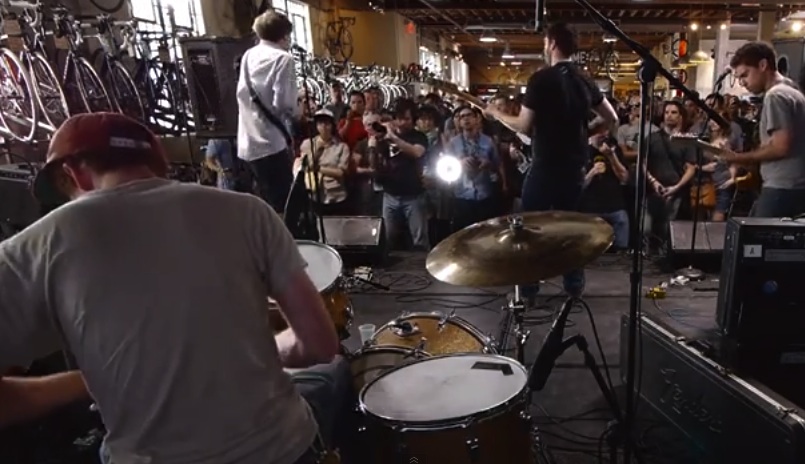
Parquet Courts play in Buffalo on June 26. Learning this an hour ago made my day. I can’t remember the last time I had a chance to hear a perfect set of music, as I expect it to be. I would have been willing to pay far more than $10 to get in. I think my favorite line from all of their songs so far is, “We all know what happened to Socrates.” They make me feel the way Nirvana made me feel when they emerged: there’s still hope.
April 21st, 2013 by dave dorsey
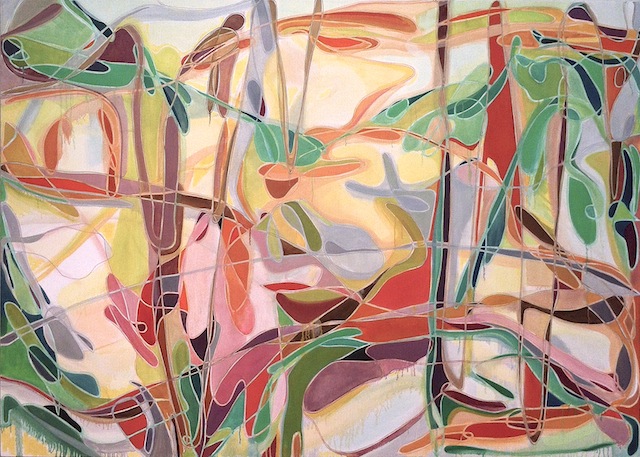
Jennifer Riley, “Wolfcreek Winter” (2013). Oil on canvas, 60 x 84 inches (All images courtesy the artist and Allegra LaViola Gallery)
“I might lean towards a pantheistic view of the world. The lessons of Color Field Painting and Abstract Expressionism, of not reporting on the visible but revealing the unknown, could also be brought into the discussion. I think, however, that wanting to depict/relate images of hard facts needs to be balanced by an awareness of what lies beyond the boundaries.” –Jennifer Riley, Hyperallergic
Her current show of paintings and drawings: Memory from Sight, at Allegra LaViola
April 18th, 2013 by dave dorsey
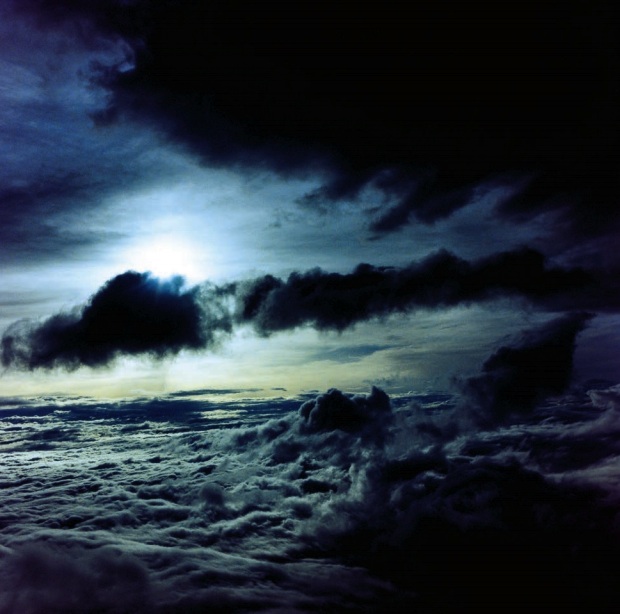
“Dawn 37”, Yu Tamauchi, from the current issue of Harper’s
Well I guess this puts me in my place (re: my previous post). This was taken from the summit of Mt. Fuji. Small detail: Yu Tamauchi lived near the top of that famous mountain in a hut for five months, taking photographs. At the risk of sounding way, way too much like Chris Farley interviewing Paul McCartney, let me just say . . . what an awesome idea. Two shots from this series appear in the current issue of Harper’s, and they were on view in December at Miyako Yoshinaga Gallery. I would wager a fairly unwieldy sum of money that Mr. Tamauchi was not using an iPhone. On the other hand, would it matter if he had?
April 17th, 2013 by dave dorsey

The more I use the iPhone to take photographs, the more I like it. It’s limited, like a Polaroid–that probably won’t last–but sometimes that makes what you get more interesting, also like a Polaroid. (I didn’t do anything to this one: no Instagram filter.) But what I like most is how it turns a camera into an appendage. I see; I shoot. There’s no planning. This was taken from my Southwest Airlines window and the sun was low, but not setting.
April 7th, 2013 by dave dorsey
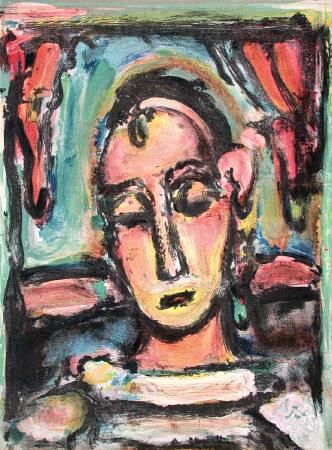
Pierrot, Georges Roualt
“Take up one idea. Make that one idea your life; dream of it; think of it; live on that idea. Let the brain, the body, muscles, nerves, every part of your body be full of that idea, and just leave every other idea alone.” –Vivekananda
April 6th, 2013 by dave dorsey
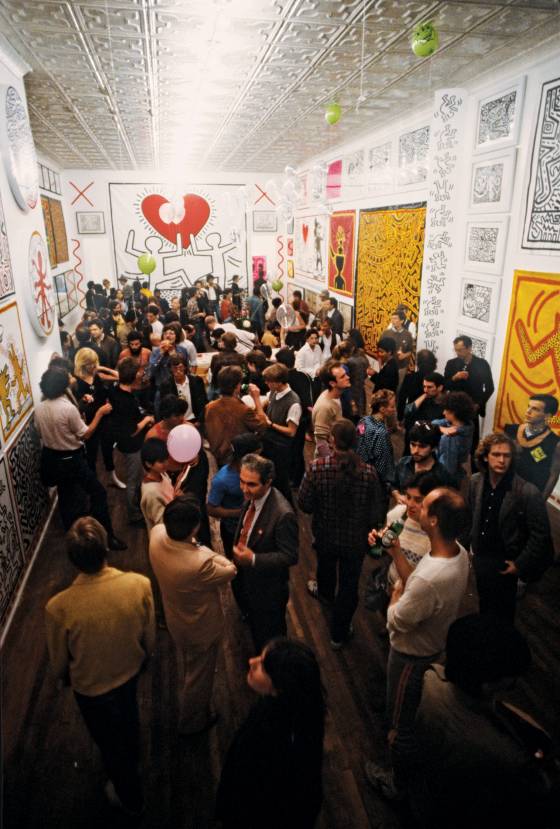
Artists and dealers are as passionate as ever about creating good shows, but fewer and fewer people are actually seeing them. Chelsea galleries used to hum with activity; now they’re often eerily empty. Sometimes I’m nearly alone. Even on some weekends, galleries are quiet, and that’s never been true in my 30 years here. (There are exceptions, such as Gagosian’s current blockbuster Basquiat survey.) Fewer ideas are being exchanged, fewer aesthetic arguments initiated. I can’t turn to the woman next to me and ask what she thinks, because there’s nobody there.
Instead, the blood sport of taste is playing out in circles of hedge-fund billionaires and professional curators, many of whom claim to be anti-market. There used to be shared story lines of contemporary art: the way artists developed, exchanged ideas, caromed off each other’s work, engaged with their critics. Now no one knows the narrative; the thread has been lost. Shows go up but don’t seem to have consequences, other than sales or no sales. Nothing builds off much else. Art can’t get traction. A jadedness appears in people who aren’t jaded. Artists enjoying global-market success avoid showing in New York for fear any critical response will interfere with sales. (As if iffy international art stars could have their juggernauts stalled by a measly bad review or two. A critic can only dream.) Ask any artist: They’re all starting to wonder what’s going on. —Jerry Saltz
A great piece from Mr. Saltz at New York magazine, though I think he’s partly transposing onto current events the lack of a feeling he would have gotten decades ago when people thought art was historically progressive and something novel was afoot. What he’s saying is all true, at least from the view I get through my tiny, inefficient portal into the economic wasteland as it looks from out here in the hinterland. In terms of how money gets spent, obviously, something is replacing the gallery show but it isn’t friendly and it’s more about investment than any sort of passion for what art can do. “The whole middle is being pulverized.” In other words, the art world follows the money and the money is all in the hands of people who just want to protect and increase it. On the other hand, maybe this is the sort of collapse that happens before something new and vital and more democratic emerges? As in France and America a couple hundred years ago (Not that anybody has a good idea how to replace an entire system that’s driving this country through yet another bubble toward another precipice.) Meanwhile, people talk about how to control assault weapons and whatever nutty thing Korea is doing to distract us from the fact that everything has ground to a halt. Depressing and sad.
April 4th, 2013 by dave dorsey
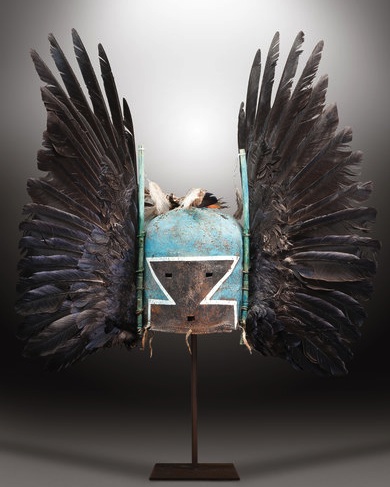
Hopi mask at auction in Paris
Can I please be the Hopi shaman who got to wear this helmet? Ah. OK. I didn’t think so.
On April 12 the Néret-Minet auction house in Paris will auction many sacred Hopi artifacts, over the objections of the tribe. Above, a helmet representing the Crow Mother, made from leather recycled from a Mexican saddle and feathers, is among the artifacts up for auction. Others are shown in this NYTimes slide show.
“The Hopis, who number about 18,000 in northeast Arizona, believe the objects in the Paris sale, which they call Katsinam, or ‘friends,’ are imbued with divine spirits. The brightly colored visages and headdresses, often adorned with horsehair, sheepskin, feathers and maize, are thought to embody the spirits of warriors, animals, messengers, fire, rain and clouds, among other things.”
Embodying the spirits of fire, rain, and clouds sounds like my idea of art, actually. Sacred or not, most of these look as if they were created right now. Paul Klee would have loved them. And Picasso.
April 2nd, 2013 by dave dorsey
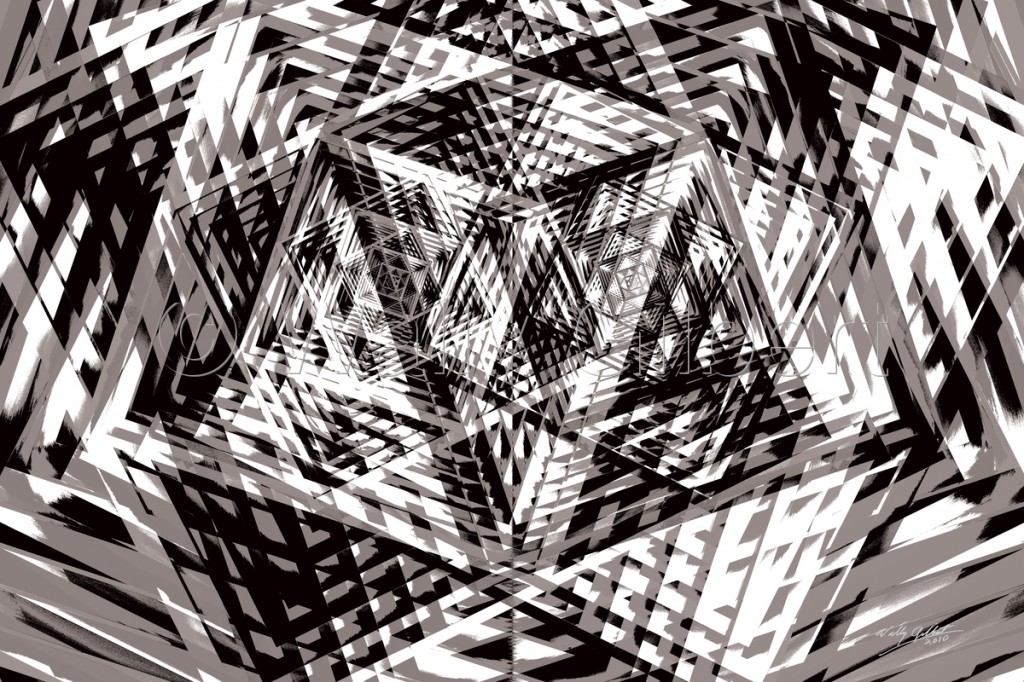
Displaced #2, Wally Gilbert
Back in 1987, here’s how the New York Times described the work that won Wally Gilbert the Nobel Prize:
In the mid-1970’s, Walter Gilbert developed with Allan Maxam (then a lab technician) a technique that, by chemically cutting DNA into segments of varying lengths, vastly simplified the reading of DNA messages. This rapid-sequencing method, together with a similar one developed by the British scientist Frederick Sanger, increased by a thousandfold the rate at which DNA information could be read, accelerating the pace of genetics research – and also earning both Gilbert and Sanger the Nobel Prize in Chemistry in 1980.
In 1986, at a conference sponsored by the Los Alamos National Laboratory, Gilbert inspired scientists to undertake the quest his work had helped make possible: to decode the human genome. Now, a quarter century later, that work has been done and science is able to look DNA as a laboratory, not just a code that governs biological reproduction and evolution.
As Gilbert told me recently, “We discovered very rapid ways of deciphering (the genetic code) and the world began to sequence DNA and genes. Twenty-five years later the first human genome was sequenced–three billion bases long (actually a yard of DNA long). Today, hundreds to thousands of genomes have been sequenced. This ability to decipher DNA underlies all of the biology one does today and all of molecular medicine.”
A dozen years ago, Gilbert closed his lab, though he’s still involved in some small biotech companies and does venture capital involving medical devices. Meanwhile, as he puts it, “I do Art.” His work is on view for a few more days at Viridian Artists in Chelsea and a month-long show just began at Khaki Gallery in Boston.
Specifically, he creates photographic images, using a computer to print MORE









